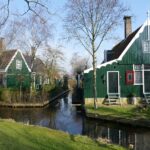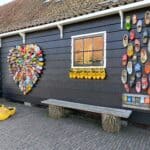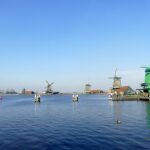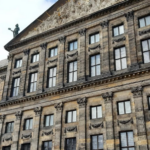Windmills Zaanse Schans and Amsterdam Tour
Wheelchair accessible experience
Want to explore authentic Dutch culture? Just outside Amsterdam lies a hidden gem: Zaanse Schans. This charming community is nestled along the Zaan River and features wooden houses, windmills, shops, and restaurants. Your guide will lead you through this picturesque area, showcasing traditional Dutch cheese production and the art of making wooden clogs. While windmills can be found throughout the Netherlands, here you’ll see some of the most iconic examples.
After immersing yourself in the rustic charm of Zaanse Schans, the adventure continues with a guided tour of Amsterdam. In the second part of your day, explore the vibrant streets of the Dutch capital, uncovering its rich history, distinctive architecture, and lively culture. Your guide will lead you through some of the city’s most captivating sites, ensuring a comprehensive experience of Amsterdam’s dynamic atmosphere.
The guided tours offered by Accessible Travel Netherlands can be customized to suit your needs. You can arrange different routes and times to fit your preferences. Your guide will ensure the entire tour, both in Zaanse Schans and Amsterdam, is accessible to wheelchair users, with all locations featuring accessible entrances. Every stop along the route has been personally selected by the Accessible Travel Netherlands team.
Highlights
- Windmills
- Traditional Zaanse houses
- Clog museum and workshop
- Cheese workshop
- Amsterdam Central Station
- Royal Palace
- Begijnhof
- Flower Market
- Amstel River
Accessibility info
- Flat terrain
- Cobblestones: from smooth to bumpy
- Accessible bridges
- Use of sidewalk ramps
- Involve walking/rolling between the sites
- Accessible toilet
- Adapted vehicle for transportation
Included
- Private tour with a professional guide
- Tour adjustable to your wishes
- Adapted vehicle for transportation
- Duration: 8 hours (incl. transfer)
- Start: your accommodation in Amsterdam or surroundings
- End: your accommodation or on request.
- Participants: max 10 per guide
Not included:
- Food/drinks
Discover the tour

Zaanse Schans
Your private guide will meet you at your accomodation in Amsterdam. From there, you’ll embark on a scenic journey to Zaanse Schans in a private adapted vehicle. Upon arrival, you’ll be greeted by the sight of iconic wooden windmills gracefully standing along the banks of the Zaan River, with picturesque meadows stretching into the distance. This enchanting landscape offers a quintessential Dutch view: charming windmills surrounded by vibrant greenery and serene waters. As you explore Zaanse Schans, you’ll also get a glimpse into life during the 18th and 19th centuries in the Zaanstreek, which is renowned as the oldest industrial region in Western Europe. Once bustling with hundreds of windmills, this area played a significant role in the region’s industrial history, producing a variety of goods and contributing to the development of Dutch industry.

Catharina Hoeve cheese farm
Your tour also includes a visit to a traditional cheese farm, where you’ll experience Dutch cheesemaking at its finest. At Catharina Hoeve cheese farm, you’ll see cheesemakers dressed in traditional Dutch costumes, giving you an authentic glimpse into the art of cheese production. They will guide you through the cheese-making process, explaining the differences between various types of Dutch cheese and the techniques used to produce them. This hands-on demonstration allows you to learn about the rich traditions and flavors of Dutch cheese. After the demonstration, you’ll have the opportunity to sample a variety of cheeses and purchase your favorites at the farm’s shop. The farm offers a delightful chance to savor the rich, creamy flavors of Dutch cheese in an authentic setting.

Dutch Clogs Factory
Another highlight of your visit is the clog factory, where you’ll discover the traditional craftsmanship behind Dutch wooden clogs. In this factory, skilled artisans carve clogs from single blocks of wood, showcasing the meticulous craftsmanship that goes into creating these iconic Dutch footwear pieces. You’ll have the chance to observe the entire process, from the initial carving to the final finishing touches. If you’re interested, you can even participate in a workshop to make your own pair of clogs, gaining hands-on experience with this traditional craft. Additionally, while you’re at the clog factory, be sure to enjoy some classic Dutch pancakes, which add a delicious touch to your cultural exploration. This experience offers a unique and immersive way to engage with Dutch traditions and craftsmanship.

Windmills
During your visit, you’ll have the opportunity to get up close to the historic windmills that have become symbols of Dutch heritage. Each windmill has its own unique name and historical significance, serving as a small-scale factory in its own right. Inside the windmills, you’ll learn about the various tasks they performed, from cutting wood and oil to grinding flour, spices, and dyes. The process of operating these windmills was both intricate and labor-intensive, reflecting the ingenuity and hard work of the Dutch craftsmen who operated them. Some of the windmills at Zaanse Schans are still in operation, providing a rare chance to observe traditional milling techniques and see how these age-old processes functioned in their prime. Witnessing these working windmills offers a deeper appreciation of the skill and effort involved in maintaining such historical practices.

Amsterdam Central Station
Amsterdam Central Station is not only a major transportation hub but also an architectural marvel steeped in history. Designed by Pierre Cuypers, the renowned architect who also created the Rijksmuseum, the station opened in 1889 and stands as a testament to late 19th-century design. Cuypers masterfully combined Gothic and Renaissance elements to create a grand facade that impresses millions of travelers each year. The station features intricate brickwork, arched windows, and elaborate spires, reflecting the opulence of the era. Inside, the station boasts expansive halls and ornate decorations, echoing the grandeur of its exterior. As the starting point for many journeys, Amsterdam Central Station not only facilitates travel but also offers a glimpse into the city’s rich architectural heritage. Modern renovations have preserved its historical charm while ensuring that it remains accessible and functional for contemporary use

Royal Palace
Dam Square, the beating heart of Amsterdam, is where history and modernity converge in a vibrant tapestry of urban life. At its center stands the Royal Palace, originally built as the city hall during the Dutch Golden Age in the 17th century. Designed by architect Jacob van Campen, the palace exemplifies Dutch Classicism with its imposing facade and detailed sculptures. In 1808, it was converted into a royal residence by King Louis Napoleon, and it continues to serve as the monarch’s official reception palace. Nearby, the New Church (Nieuwe Kerk) adds to the historical depth of the square. This Gothic-style church, dating back to the 15th century, hosts royal investitures and exhibitions. The square itself is a lively hub, surrounded by shops, cafes, and historic buildings, and frequently filled with street performers, bustling markets, and various events. Its flat, spacious layout makes it easily accessible, allowing all visitors to immerse themselves in the rich cultural and historical atmosphere of Amsterdam.

Begijnhof
The Begijnhof is a tranquil oasis nestled in the heart of Amsterdam, offering a serene retreat from the city’s hustle and bustle. This historic inner courtyard dates back to the 14th century and was originally a sanctuary for the Beguines, a Catholic sisterhood living a semi-monastic life. The Begijnhof features some of the city’s oldest houses, including the Houten Huys, Amsterdam’s oldest wooden house built around 1528. The charming brick buildings and manicured gardens provide a picturesque setting, while the Begijnhof Chapel (Begijnhofkapel) offers a quiet space for reflection. Despite its central location, the Begijnhof maintains a peaceful atmosphere, with accessible pathways inviting visitors to explore its storied past. The hidden gem stands as a testament to Amsterdam’s historical layers and offers a unique glimpse into the city’s medieval heritage.

Flower Market
Amsterdam’s Flower Market, or Bloemenmarkt, is a feast for the senses and a unique cultural experience. Established in 1862, it is the world’s only floating flower market, with stalls set on houseboats along the Singel canal. This vibrant market offers a dazzling array of blooms, bulbs, and plants year-round, reflecting the Netherlands’ famed horticultural expertise. Visitors can find everything from traditional Dutch tulips to exotic flowers and a variety of gardening supplies. The market’s accessible layout makes it easy to navigate, allowing everyone to enjoy the vibrant colors and delightful fragrances. The Bloemenmarkt not only caters to gardeners but also provides a charming glimpse into Amsterdam’s rich botanical traditions, making it a must-visit destination for those seeking the natural beauty the city is famous for.

Amstel River
Flowing through the heart of Amsterdam, the Amstel River is both a picturesque landmark and a historical artery of the city. The river’s name is derived from “Aeme stelle,” old Dutch for “water area,” reflecting its importance in the city’s development. It has been central to Amsterdam’s history since its founding, with the city itself named after a dam on the Amstel. The river offers scenic views and a sense of tranquility amidst the urban landscape. Accessible walkways along the riverbank allow for leisurely strolls, where you can admire the charming houseboats and historic bridges, such as the Magere Brug (Skinny Bridge), an iconic wooden drawbridge dating back to 1934. The Amstel’s serene waters have inspired countless artists and continue to be a serene backdrop that encapsulates the beauty and calm of Amsterdam’s waterways. Whether you’re enjoying a boat tour or simply walking along its banks, the Amstel River provides a peaceful escape and a connection to the city’s rich maritime heritage.
